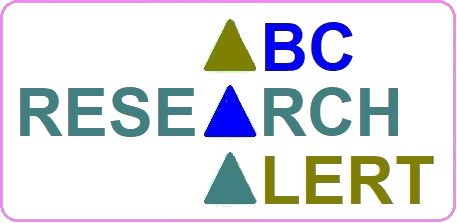Exchange rate and Export of Bangladesh: Does Marshall-Lerner condition holds?
DOI:
https://doi.org/10.18034/ra.v10i1.588Keywords:
Exchange rate, export earnings, cointegration, VECM, Granger CausalityAbstract
Export is expected to have a favorable impact on GDP growth, and the exchange rate is expected to have a major impact on export and thus export earnings. The relationship between exchange rate and export is a hotly debated topic in macroeconomics, and the goal of this research is to see if the Marshall-Lerner condition holds incase of Bangladesh that is if devaluation of domestic currency increase export earnings. Explanatory variables of the model in the study are the exchange rate, foreign income (WGDP), and domestic income (DGDP). Cointegration approaches; Error Correction model, Granger Causality test are used in this study to estimate the long and short-run impacts. With time series data from 1973Q3 to 2018Q2, we used the Error Correction Model and the Granger Causality Test. The findings of VECM support short-run exchange rate and export adjustments. The bidirectional causality between exchange rate and export is established using the Granger causality test.
Downloads
References
Aziz, N. (2012), “Does A Real Devaluation Improve The Balance Of Trade?: Empirics From Bangladesh Economy”, The Journal of Developing Areas, Vol. 46 No. 2, pp.19-41
Bangladesh Trade | WITS Data, (2015), Retrieved 17 October 2021, from https://wits.worldbank.org/countrysnapshot/en/BGD
Country/Commodity Wise Export receipts. (2021), available at: https://www.bb.org.bd/econdata/export/exp_rcpt_country_commodity.php (Accessed 9 December 2021)
Cheung, Y. and Sengupta, R., (2013), “Impact of Exchange Rate Movements on Exports: An Analysis of Indian Non-Financial Sector Firms”, SSRN Electronic Journal, available at: https://papers.ssrn.com/sol3/papers.cfm?abstract_id=2289749 (Accessed 9 December 2021).
Chowdhury, M. and Younus, S. (2015), “Real Exchange Rate and its Impact on Export, Import and Trade Balance: Is There any J Curve Effect in Bangladesh?”, Working Papers id:7985, eSocialSciences.
Dickey, D.A. and W.A. Fuller, (1981), “Likelihood Ratio Statistics for Autoregressive Time Series with a Unit Root.” Econometrica, Vol. 49 No.4, pp. 1057-1078.
Engle, R. and Granger, C. (1987), “Co-Integration and Error Correction: Representation, Estimation, and Testing”, Econometrica, Vol. 55 No. 2, pp.251.
Fang, W. and Miller, S. (2007), “Exchange rate depreciation and exports: the case of Singapore revisited”, Applied Economics, Vol. 39 No. 3, pp.273-277.
Genc, E. and Artar, O. (2014), “THE EFFECT OF EXCHANGE RATES ON EXPORTS AND IMPORTS OF EMERGING COUNTRIES”, Eujournal.org, available at: https://www.eujournal.org/index.php/esj/article/download/3346/3110 (Accessed 9 December 2021).
“International Financial statistics”, available at: https://data.imf.org/?sk=4c514d48-b6ba-49ed-8ab9-52b0c1a0179b (accessed at 10 December 2021)
Johansen, S. and K, Juselius. (1990), “Maximum likelihood estimation and inference on cointegration-with Application to the Demand for Money”, Oxford Bulletin of Economics and Statistics, 52, pp. 169-210
Phillips, P.C.B. and Perron, P. (1988), “Testing for a Unit Root in Time-Series Regrssion”, Biometrica, 75, pp. 335-346
Rose, A. (1990), “Exchange rates and the trade balance”, Economics Letters, Vol. 34 No. 3, pp.271-275.
Rünstler, G. Sédillot, F. (2003), “Short-term Estimates of Euro Area Real GDP by Means of Monthly Data”, Working Paper Series, No. 276, European Central Bank, September 2003.
Sédillot, F. Pain, N (2003), “Indicator Models of Real GDP Growth in Selected OECD Countries”, Working Papers No. 364, OECD Economics Department, 22 July.
Stock, J.H., Watson, M.W., (1989), “Interpreting the evidence on money-income causality”, Journal of Econometrics, Vol. 40, pp. 161-182.
Sekmen, F. and Saribas, H. (2007), “Cointegration and Causality among Exchange Rate, Export, and Import: Empirical Evidence from Turkey”, Applied Econometrics and International Development, Vol. 7 No. 2, pp. 71-83.
Stock, J. and Watson, M. (1989), “New Indexes of Coincident and Leading Economic Indicators: Discussion”, NBER Macroeconomics Annual, Vol. 4, pp.408-409.
Tyler, W. (1981), “Growth and export expansion in developing countries”, Journal of Development Economics, Vol. 9 No.1, pp.121-130.
Weliwita, A. Ekanayake, E. and Tsujii, H. (2000), “Real Exchange Rate Volatility and Sri Lanka’ s Exports to the Developed Countries, 1978-96”, JOURNAL OF ECONOMIC DEVELOPMENT, Vol. 24 No. 1
Xu, Z., (1996), “On the Causality between Export Growth and GDP Growth: An Empirical Reinvestigation”, Review of International Economics, Vol. 4 No. 2, pp.172-184.
Younus, D. and Chowdhury, M. (2021), “Real Exchange Rate and its Impact on Export, Import and Trade Balance: Is there any J curve effect in Bangladesh?”, Monetary Policy Department and Research Department, Bangladesh Bank.
Zhou, S. (2001), “The Power of Cointegration Tests Versus Data Frequency and Time Spans”, Southern Economic Journal, Vol. 67 No.4, pp.906-921.
-0-
Downloads
Published
Issue
Section
License
ABC Research Alert is an Open Access journal. Authors who publish with this journal agree to the following terms:
- Authors retain copyright and grant the journal the right of first publication with the work simultaneously licensed under a CC BY-NC 4.0 International License that allows others to share the work with an acknowledgment of the work's authorship and initial publication in this journal.
- Authors are able to enter into separate, additional contractual arrangements for the non-exclusive distribution of the journal's published version of their work (e.g., post it to an institutional repository or publish it in a book), with an acknowledgment of its initial publication in this journal. We require authors to inform us of any instances of re-publication.
















